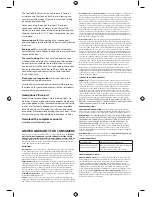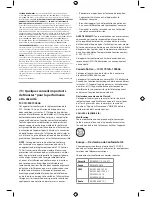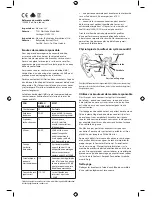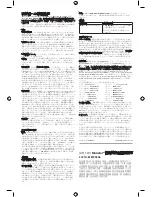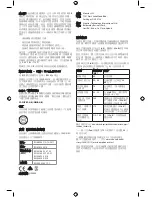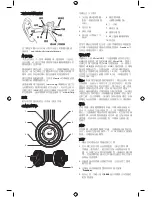
This decibel (dB) table compares some common sounds
and shows how they rank in potential harm to hearing.
“... a typical person can safely listen to an iPod for 4.6 hours
per day at 70% volume.”
“... knowing the levels one is listening to music at, and
for how long is extremely important.” From www.cbc.ca/
health/story/2006/10/19/music-earphones.html
Get the most out of your equipment and enjoy great
audio performance even at safe levels. Our headphones
will allow you to hear more details at lower volume levels
than ever before.
Physiology of the Ear and Hearing
For additional information on what loud noises do to your ear and chart
reference www.abelard.org/hear/hear.php#loud-music
Use Responsibly
Do not use headphones when it’s unsafe to do so—while
operating a vehicle, riding a bike, crossing streets, or during
any activity or in an environment where your full attention
to your surroundings is required.
It‘s dangerous to drive while wearing headphones, and
in many places, illegal because it decreases your chances
of hearing life-saving sounds outside of your vehicle, such
as another car’s horn and emergency vehicle sirens.
Please avoid wearing your headphones while driving.
Use one of Monster’s FM transmitters to listen to your
mobile media devices instead.
SOUND
NOISE
LEVEL (dB)
EFFECT
Whisper
30
Very quiet
Quiet Office
50–60
Comfortable hearing levels
are under 60 dB
Vacuum Cleaner,
Hair Dryer
70
Intrusive; interferes with
telephone conversations
Food Blender
85–90
85 dB is the level at which
hearing damage (8 hrs.) begins
Garbage Truck,
Cement Mixer
100
No more than 15 minutes
of unprotected exposure
recommended for sounds
between 90–100 dB
Power Saw,
Drill/
Jackhammer
110
Regular exposure to sound
over 100 dB of more than
1 minute risks permanent
hearing loss
Rock Concerts
(varies)
110–140
Threshold of pain begins
around 125 dB
Chart information obtained from www.nidcd.nih.gov/health/education/teachers/
pages/common_sounds.aspx
Learn how to establish a safe listening level and review
other important safety guidelines from the Consumer
Electronics Association at www.ce.org. Important
information on how to prevent Noise-Induced Hearing
Loss (NIHL) and a comprehensive list of which noises
can cause damage can be found on the Deafness Research
Foundation’s website, www.drf.org.
Cleaning
Wipe earcups with a soft cloth dampened with a mild
soap solution.
Keys and Parts
The headset contains the following parts:
Malleus
Cochlear Nerve
Stapes
Tympanic
Membrane
Auditory Canal
Cochlea
Incus
Vestibule
To Nose/Throat
1
5
2
6
3
7
4
8
9
10
1. Multifunction key
(Power On/Off, Pairing,
Activate Voice Dialing)
2. Track back
3. Volume down
4. Indicator light
(Only visible when lit)
5. Play / Pause key
(Answer/End/Reject Call)
6. Track forward
7. Volume up
8. Charger connect
9. 3.5mm cable port
10. Microphone
Before using the headset, you must charge the battery
and pair the headset with a compatible device. Freedom
will function without a charged battery when attached
by cable to phone or music player.
Charge the Battery
The headphone includes a Micro USB cable that can
be connected to your computer or other device made
for USB charging. Plug the Micro USB end of the included
USB cable into the USB micro port charger connector under
the left earcup of the headphone. Plug the other end into
a USB port on your computer or other devices made for
USB charging. The indicator light will be red while charging.
Once fully charged, the green LED will be on. Charge time
is 1.5 hours on an empty battery. The fully charged battery
has power for up to 10 hours talking and/or music time
and up to 100 hours standby time.





